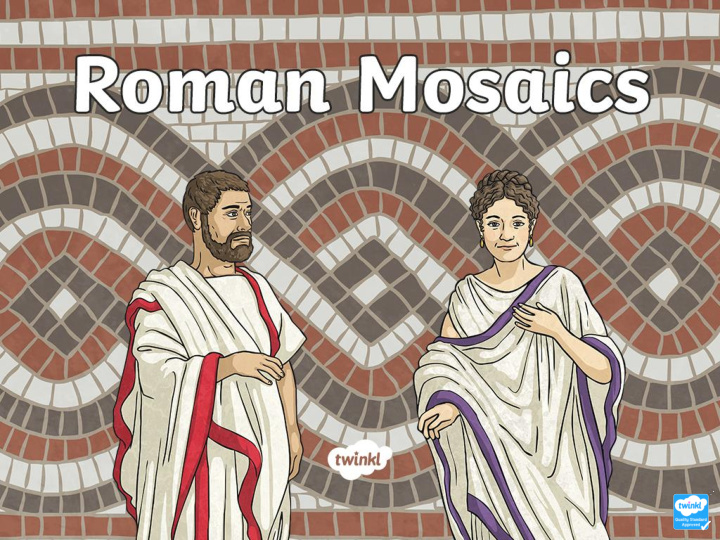



Mosaics The floors of Roman buildings were often richly decorated with mosaics. Mosaics were made from tiny coloured stones which they called tesserae. Photo courtesy of zeeweez (@flickr.com) - granted under creative commons licence - attribution
Mosaics Mosaics have been found that show scenes of history, as well as everyday Roman life. Photo courtesy of xuan che (@flickr.com) - granted under creative commons licence - attribution
Mosaics Mosaic floors were a statement of how wealthy and important you were. Poor people would not be able to afford them. The bigger and more detailed the mosaic, the more impressive. Photo courtesy of JacobEnos (@flickr.com) - granted under creative commons licence - attribution
Mosaics The mosaic would decorate the floor of the main room. These were stuck to the floor with mortar, a type of cement. Each mosaic used thousands of pieces to make a pattern.
Mosaics The Greeks were the first to make mosaics. They started by using pebbles and then also began to use cut stone with pebbles. The Romans copied their method but just used cut stone instead of pebbles. Villas and bath houses had mosaic floors and some office signs were even made of mosaics. Temples and public areas usually had patterned floors made with the larger cut stone tiles, a method known as Opus Sectile.
Mosaics The Romans used a hammer and hardie to cut the stones to approximately 8-12mm. A hardie (on the left) is like a chisel, this would be stuck into a block of wood. hardie chisel Photo courtesy of Verity Cridland (@flickr.com) - granted under creative commons licence - attribution
Mosaics Some mosaics had pieces cut down to 1-2mm for very intricate patterns. This is the Alexander mosaic that you can still see today in Pompeii, Italy. Photo courtesy of kudumomo (@flickr.com) - granted under creative commons licence - attribution
Mosaics Imagine the length of a metre stick, then a square metre. Just 1m 2 of mosaic on the floor might take 10 000 pieces of tesserae! You don’t see lots of bright colours in Roman mosaics. This is because they mainly used natural stones. The red, used particularly in Britain, was from cut brick or tile. Occasionally, they might use bits of glass for a particular effect.
Mosaics You can probably imagine that a floor made from thousands of tiny stones would not be comfortable to walk on, but this wasn’t a problem when you had slaves to work hard for you. The slaves would have to use hard stones, sand and water to grind the stones down so they were smooth to walk on.
Mosaic Examples Photo courtesy of HumanSeeHumanDo (@flickr.com) - granted under creative commons licence - attribution
Mosaic Examples Photo courtesy of xJason.Rogersx (@flickr.com) - granted under creative commons licence - attribution
Mosaic Examples Photo courtesy of Son of Groucho (@flickr.com) - granted under creative commons licence - attribution
Mosaic Examples Photo courtesy of isawnyu (@flickr.com) - granted under creative commons licence - attribution
Recommend
More recommend